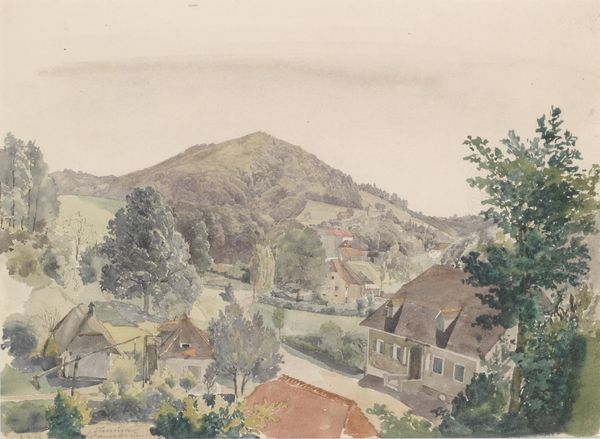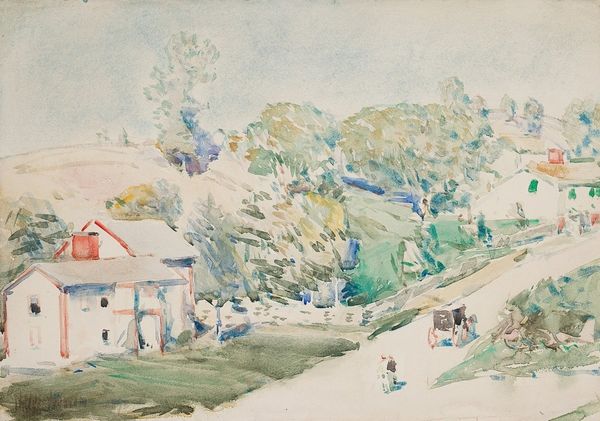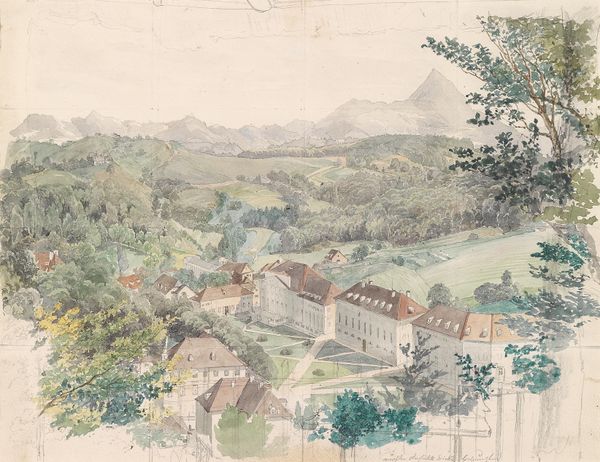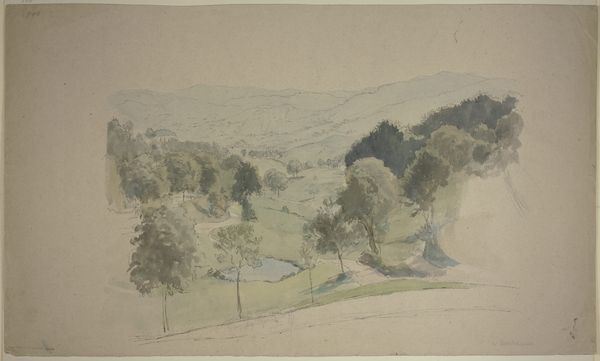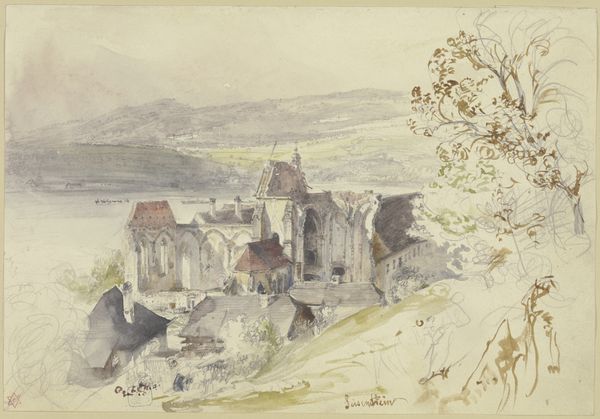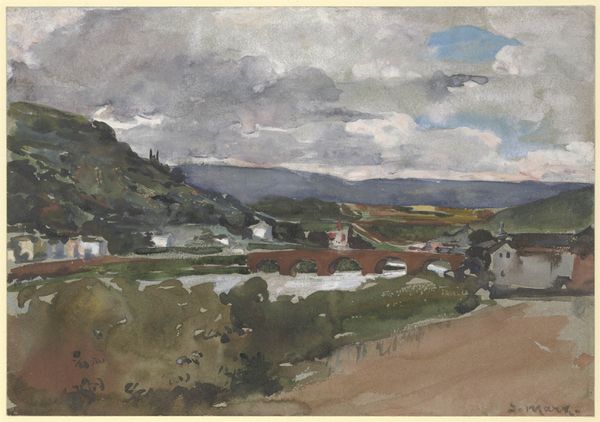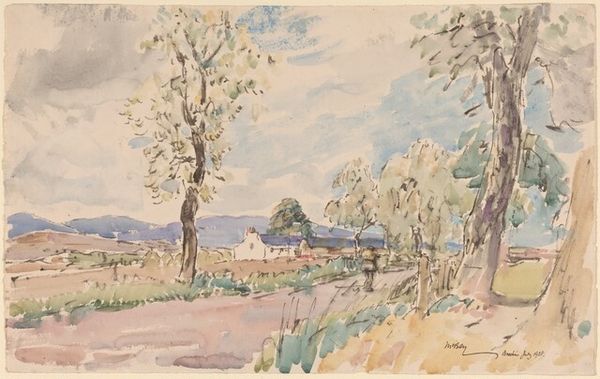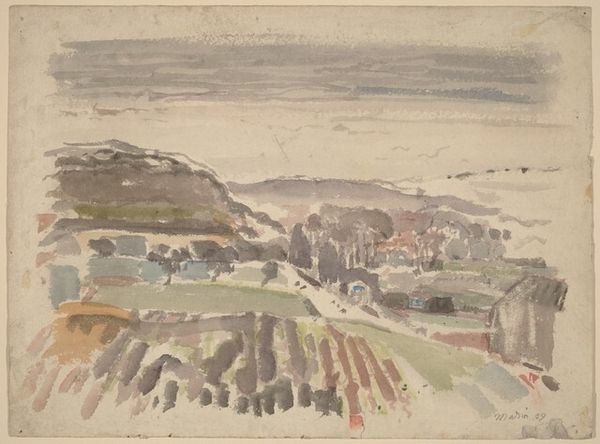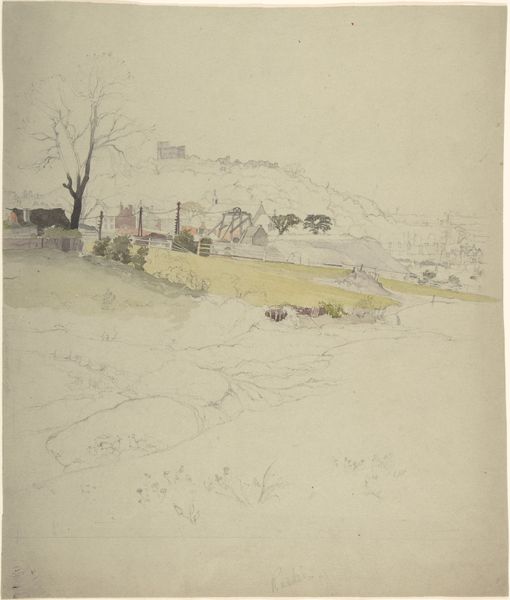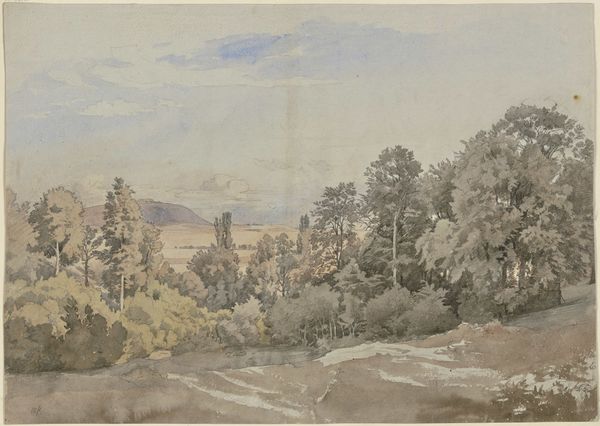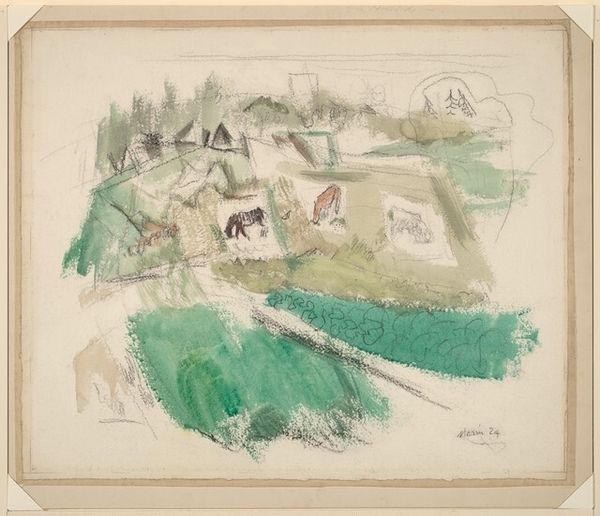
View over the town of Bad Rohitsch-Sauerbrunn (18th September 1848) 1848
0:00
0:00
plein-air, watercolor
#
plein-air
#
landscape
#
watercolor
#
romanticism
#
watercolor
Dimensions: 26 x 33 cm
Copyright: Public domain
Editor: This is Johann Nepomuk Passini’s “View over the town of Bad Rohitsch-Sauerbrunn (18th September 1848),” a watercolor landscape from 1848. There's something so serene and picturesque about the village nestled amongst the hills. What strikes you most about it? Curator: The date, 1848, immediately draws my attention. This was a year of widespread revolution across Europe. To see such a peaceful, almost idyllic scene rendered at that very moment is incredibly telling. The image provides insight into the Austrian socio-political context where landscape paintings were commissioned by wealthy individuals and public institutions who wanted to highlight idealized settings to establish shared identity through idealized territory. Editor: So, the choice of subject matter is a deliberate commentary in itself? Curator: Precisely. While upheaval gripped many cities, this watercolor presents a vision of stability and harmony. Passini, working within the conventions of Romantic landscape painting, may have been indirectly reinforcing the existing social order through his artistic choices. It’s interesting, too, to consider where this piece might have been displayed. Editor: That’s fascinating! Was art often used that directly to communicate such specific ideas? Curator: Frequently! Think about how museums and galleries evolved, particularly in the 19th century, to present curated versions of history and national identity through art. A piece like this would have contributed to that narrative, albeit subtly. Can you imagine the viewer reflecting on stability while looking at that landscape? Editor: I never considered the political undertones of something so seemingly straightforward. Thank you for highlighting the depth hidden within its beauty! Curator: My pleasure. Looking at art through a historical lens really enriches our understanding of not just the art itself, but the world it inhabited.
Comments
No comments
Be the first to comment and join the conversation on the ultimate creative platform.
